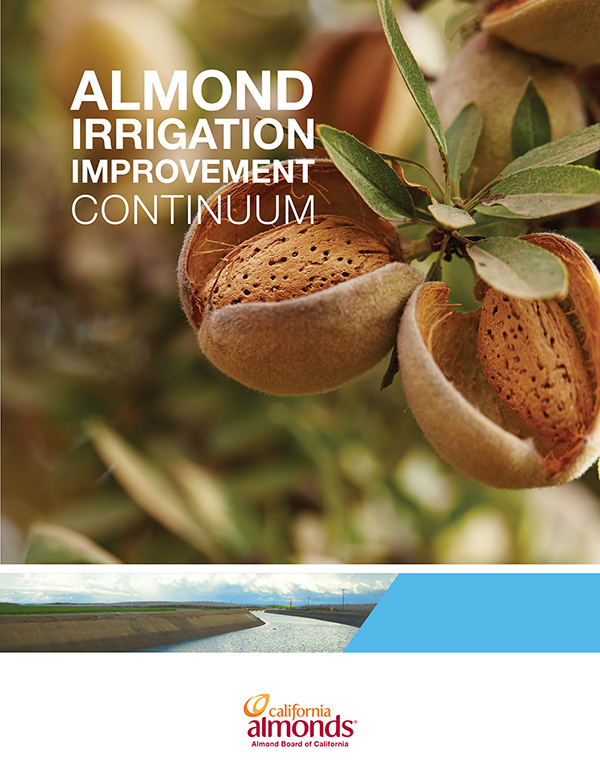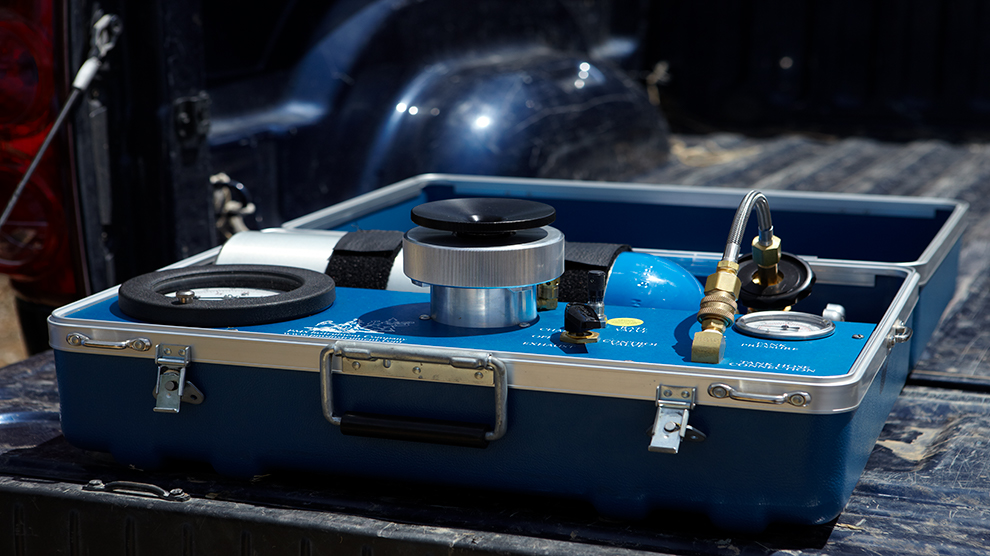In Tom Devol’s perspective, conversations with growers on whether they timed their first irrigation correctly often go something like this:
“Why did you start irrigating?” he’ll ask.
“My neighbor across the street started,” the grower will respond.
When the neighbor is asked the same question, that person will say, “Well, the guy south of me started irrigating.”
And why did that grower start?
“I was just checking for leaks.”
Devol, senior manager of Field Outreach and Education for the Almond Board of California (ABC), may chuckle as he tells this story. But when it comes down to it, understanding when to begin irrigating is no laughing matter.
There are multiple benefits to choosing the right time of year to irrigate, from reduced risk of root and crown diseases to savings in water and power that would have been used to apply an irrigation cycle before one is needed. Because the first irrigation can be different each year, Devol recommends growers reference several sources of information to inform their decision.
“In most cases, people probably start too early,” he said, “but they might be able to save an irrigation application if they use the right tools to help them understand optimal timing.”
Start with 3 Simple Steps
Here are three things growers can do to determine when to start irrigating:
- Check stem water potential with a pressure chamber
- Look at soil moisture conditions in the root zone
- Monitor evapotranspiration (ET)
ABC’s Almond Irrigation Improvement Continuum contains a wealth of information to help growers make this determination, including how to use a pressure chamber. Growers can also check out Episode 5 of ABC’s “The Irrigation Station” YouTube series for a step-by-step demonstration on how to use this tool.
“Pressure chambers are the gold standard to measure stress,” Devol explained. “Growers can conduct these tests themselves or by working with their PCAs or UC farm advisors.”
In regard to his second tip, Devol encourages growers to utilize the “hand feel method” – using a shovel or soil auger to dig three or four feet into the root zone and then use their hands to determine the moisture level of the soil.
“USDA has developed a guide that helps you determine what kind of soil you have and then tells you how to properly squeeze it in your palm,” Devol explained. “If you only execute one of these three tips, make sure it’s this one.”
The National Resources Conservation Service also provides a brochure to help growers estimate soil moisture by feel and appearance. Copies are available upon request through the Almond Board.
Reviewing data provided by soil moisture sensors is a substitute for the hand feel method, Devol said. Declining moisture levels indicate trees are using water. Conversely, climbing or “flat line” readings show greater soil saturation.
The third way to determine whether irrigation should begin is by referencing ET and weather data.
“If we want to know how much water a tree is using and how much is being put back into the soil, it’s important to understand how much moisture is in the soil at the start of the season,” Devol said. “By leveraging weather data, growers can cut back on run times, pumping and how much water they’re using.”
Factoring in rainfall
Rainfall varies greatly throughout the Central Valley. This means that orchards in the Sacramento Valley – which averages more than 20 inches of rain each year – have different irrigation needs than those in Kern County, which averages less than 7 inches of rain each year.

The Almond Irrigation Improvement Continuum is a comprehensive manual of irrigation management and scheduling practices.
“To determine your target irrigation application in northern almond-growing regions, you must account for the orchard’s use of moisture stored in the soil and in-season effective rainfall,” states the Irrigation Continuum. “The result will be a reduction of applied irrigation water or a delay in irrigation in the spring months, or both.
“In southern almond regions, effective in-season rainfall is small and soil storage is largely a function of applied irrigation water wetting the root zone.”
The Almond Board provides an easy-to-use one pager to help growers determine when to begin irrigating and to understand their own orchard’s water requirements. For instance, one of the graphs demonstrates how much irrigation water is necessary at different times of the year.
“The graph factors in how much water you need to apply versus how much water is already in the soil, in addition to considering ET and weather data,” Devol said. “Say the tree consumed 3 inches of water last week: I got an inch and a quarter of rain and there is an inch of water in the soil, so I need to irrigate three-quarters of an inch to make it even.”
CASP helps growers maximize efficiency
Widespread grower understanding of when and how to irrigate efficiently is a key element of the industry’s effort to achieve the Almond Orchard 2025 Goal of reducing the amount of water required to grow a pound of almonds by 20%.
An important way for every grower to measure his or her progress toward greaterefficiency and learn in what areas they may improve is by completing the Irrigation Management and Irrigation Improvement Continuum modules included in ABC’s California Almond Sustainability Program, or CASP.
Another element included in CASP is the Irrigation Calculator. To use the calculator, growers enter information about their orchard, such as row and tree spacing, soil texture, root depth, etc., as well as basic information about the irrigation setup for each field or block. Once entered, the calculator will update with weather information and calculate the run time for the grower’s system to replace the water lost as calculated by ETc for that week.
“CASP will also give the grower a comparison report that shows how their practices compare to those of other growers,”
Devol said. “From this, growers can consider what practices they should be implementing but aren’t currently, and strategize around how they can better maximize yield with increased water efficiency on every acre.”
Devol encourages growers to reach out to him at tdevol@almondboard.com with any irrigation-related concerns.
“My Field Outreach and Education team exists to help growers,” he said. “We welcome your questions. We want to work with growers and help them.”
Growers interested to learn more about when to starting irrigation are highly encouraged to watch a recording of ABC’s Training Tuesday, “Techniques and Tools to Determine When to Start Irrigation,” held on March 19.


